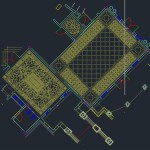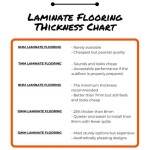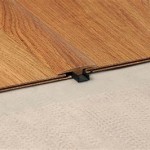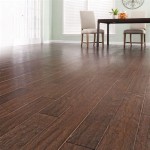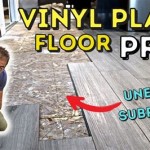Repairing Vinyl Flooring: A Comprehensive Guide
Vinyl flooring, a popular choice for residential and commercial spaces, is known for its durability, water resistance, and affordability. However, even with its resilience, vinyl floors are susceptible to damage over time. Tears, dents, scratches, and loose seams are common problems that detract from the appearance and longevity of the flooring. Fortunately, many issues can be addressed with appropriate repair techniques, saving property owners the expense of complete floor replacement. This article provides a detailed guide to repairing various types of vinyl flooring damage.
Before embarking on any repair, it is crucial to identify the type of vinyl flooring installed. Sheet vinyl, vinyl tile, and luxury vinyl plank (LVP) each require slightly different approaches. Sheet vinyl, typically installed in large, continuous pieces, may necessitate seam repairs or patching. Vinyl tiles, individual squares adhered to the subfloor, are often easier to replace individually. LVP, mimicking the look of wood or stone, often features interlocking or glue-down installation, influencing the repair method. Understanding the flooring type is paramount for selecting the correct materials and techniques.
Preparation is another critical step. The damaged area must be thoroughly cleaned and inspected. Remove any dirt, debris, or adhesive residue that may hinder the repair process. A scraper, vacuum cleaner, and damp cloth can be used for cleaning. Examining the extent of the damage will help determine the best course of action and the required materials.
Repairing Scratches in Vinyl Flooring
Superficial scratches are among the most common types of vinyl floor damage. These minor imperfections usually affect only the surface layer and can often be concealed or removed with relatively simple techniques.
For light scratches, a floor polish or scratch concealer designed specifically for vinyl flooring may be sufficient. Apply the product according to the manufacturer's instructions, typically involving a clean cloth and gentle buffing. The polish fills in the scratch, making it less visible and restoring the floor's shine. Multiple applications may be needed for deeper scratches.
A slightly more involved approach involves using a heat gun or hairdryer. Heat can help to soften the vinyl, allowing the scratch to blend back into the surrounding material. Exercise caution when using heat, as excessive heat can damage the flooring. Apply the heat in short bursts and regularly check the surface temperature. After heating, use a rolling pin or similar tool to gently smooth the area. The scratches should become less noticeable as the vinyl cools.
For deeper scratches that penetrate the surface layer, a vinyl repair kit may be necessary. These kits usually contain a filler compound, color tints, and an applicator. Clean the scratch thoroughly, and then apply the filler material, carefully matching the color to the surrounding flooring. Allow the filler to dry completely according to the manufacturer's instructions. Once dry, sand the area smooth with fine-grit sandpaper, ensuring it is level with the surrounding floor. The key is to blend the repair seamlessly into the existing floor finish.
Addressing Tears and Cuts in Vinyl Flooring
Tears and cuts in vinyl flooring present a more significant challenge than scratches, requiring careful attention to prevent further damage and ensure a durable repair. The approach depends on the size and location of the tear.
Small tears and cuts, particularly in less conspicuous areas, can often be repaired with a vinyl seam sealant or repair compound. Clean the area thoroughly, removing any loose debris. Apply the sealant or compound to the edges of the tear, carefully aligning them to minimize the visibility of the repair. Use a clean cloth or sponge to remove any excess sealant. Apply weight to the repaired area while it dries to ensure a strong bond. The drying time will vary depending on the specific product used, so follow the manufacturer's instructions.
For larger tears or cuts, especially those in high-traffic areas or that expose the subfloor, a patch is typically required. The patch needs to be an exact match to the existing flooring in terms of color, pattern, and texture. If possible, use a remnant of the original flooring. If a remnant is unavailable, obtain a matching piece from a less visible area, such as under a refrigerator or in a closet, and replace it with a similar but less critical piece from elsewhere. Carefully cut out the damaged section using a utility knife and a straightedge. The edges should be clean and even.
Next, prepare the subfloor by cleaning and leveling it. Apply adhesive specifically designed for vinyl flooring to both the subfloor and the back of the patch. Carefully position the patch into the prepared opening, ensuring it aligns perfectly with the surrounding flooring. Use a rolling pin or hand roller to press the patch firmly into place, removing any air bubbles. Wipe away any excess adhesive immediately. Place a heavy weight on the patch for the recommended drying time, usually 24 to 48 hours, to ensure a strong and permanent bond.
Repairing Loose Seams and Bubbles in Vinyl Flooring
Loose seams and bubbles are common issues in sheet vinyl flooring, often caused by inadequate adhesive or subfloor imperfections. These problems can lead to tripping hazards and allow moisture to penetrate beneath the flooring, potentially causing mold growth or subfloor damage.
For loose seams, begin by cleaning the area along the seam thoroughly. Lift the edges of the seam carefully, removing any dirt or debris. Apply a bead of vinyl seam sealant or adhesive beneath the edges of the seam, being careful not to apply too much. Press the edges of the seam back together, ensuring they are aligned correctly. Use a seam roller to apply pressure along the seam, ensuring a strong bond. Wipe away any excess sealant or adhesive with a damp cloth. Place a weight along the seam until the adhesive has fully cured.
Bubbles in vinyl flooring can occur due to trapped air or moisture. To address this, carefully slit the bubble with a sharp utility knife. Then, use a syringe to inject vinyl adhesive under the flooring through the slit. Press the flooring down firmly, working the adhesive out to the edges of the bubble. Use a rolling pin or hand roller to smooth the area and remove any remaining air pockets. Wipe away any excess adhesive. Place a weight on the repaired area until the adhesive has fully cured. For larger bubbles, multiple slits may be necessary to effectively release the trapped air and apply the adhesive.
In cases where the bubble is caused by moisture, it is essential to identify and address the source of the moisture before attempting the repair. Leaving the moisture issue unresolved will likely result in the bubble reappearing. After identifying the source, allow the area to dry completely before applying adhesive and smoothing the surface.
If these methods fail to completely eliminate the bubble, the section of flooring may need to be cut out and replaced with a patch, as discussed earlier. This ensures a long-lasting and aesthetically pleasing repair.
Regardless of the specific repair method employed, it is important to follow proper safety precautions. Wear appropriate personal protective equipment, such as gloves and eye protection, when working with adhesives, solvents, or cutting tools. Ensure adequate ventilation when using chemical products. Properly dispose of any waste materials in accordance with local regulations.
Regular maintenance is crucial for preventing future damage to vinyl flooring. Sweep or vacuum regularly to remove dirt and debris that can scratch the surface. Use a damp mop with a mild detergent to clean the floor. Avoid using abrasive cleaners, scouring pads, or harsh chemicals, as these can damage the finish. Place mats or rugs in high-traffic areas to protect the flooring from wear and tear. Use furniture pads under the legs of heavy furniture to prevent dents and scratches. By following these preventative measures, the longevity and appearance of vinyl flooring can be significantly extended.

Repair And Reglue Sheet Vinyl Floors Diy

How To Repair Vinyl Flooring Ina Services

How To Repair Torn Vinyl Flooring Bob Vila Radio

How To Repair Luxury Vinyl Plank Flooring The Palette Muse

Repairing Vinyl Flooring Diy Family Handyman

How To Repair Luxury Vinyl Plank Flooring The Palette Muse

Vinyl Floor Repair Kit

How To Repair Vinyl Flooring Fixing Sc Bubbles More

How To Repair Vinyl Flooring Fixing Sc Bubbles More

How To Repair Vinyl Flooring Fixing Sc Bubbles More
Related Posts


